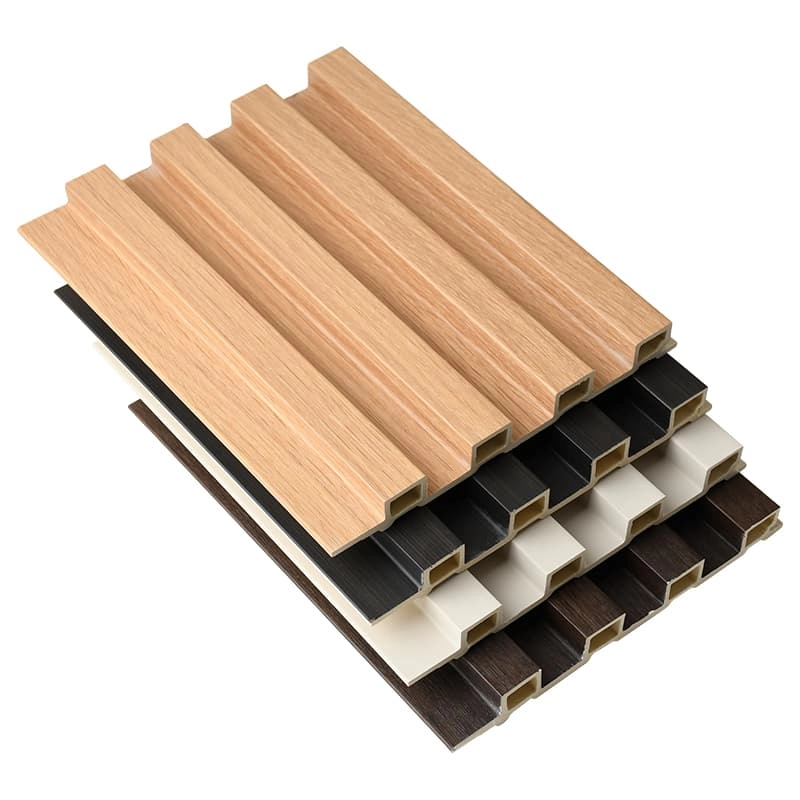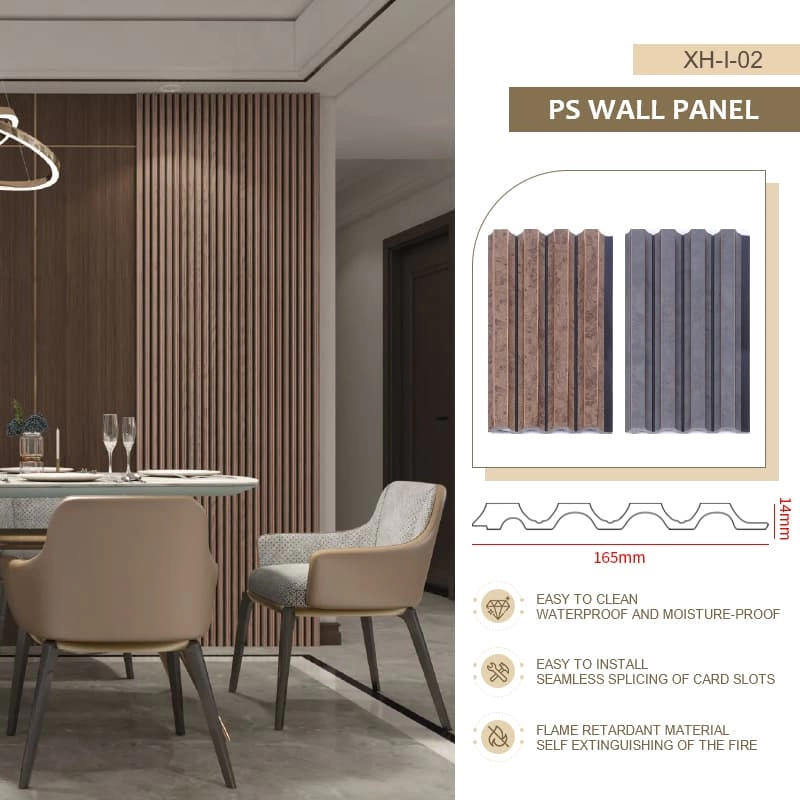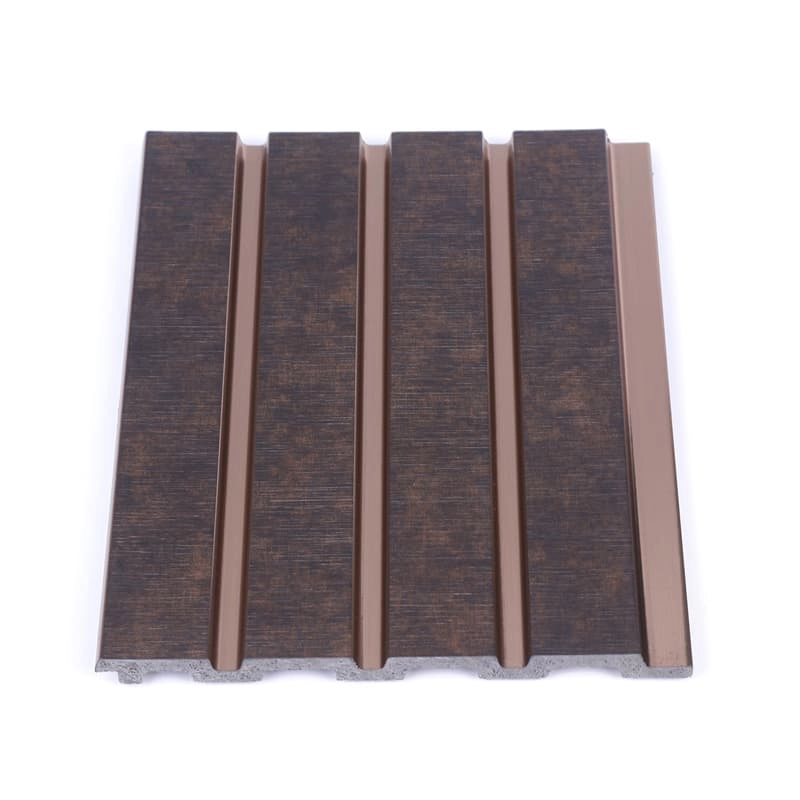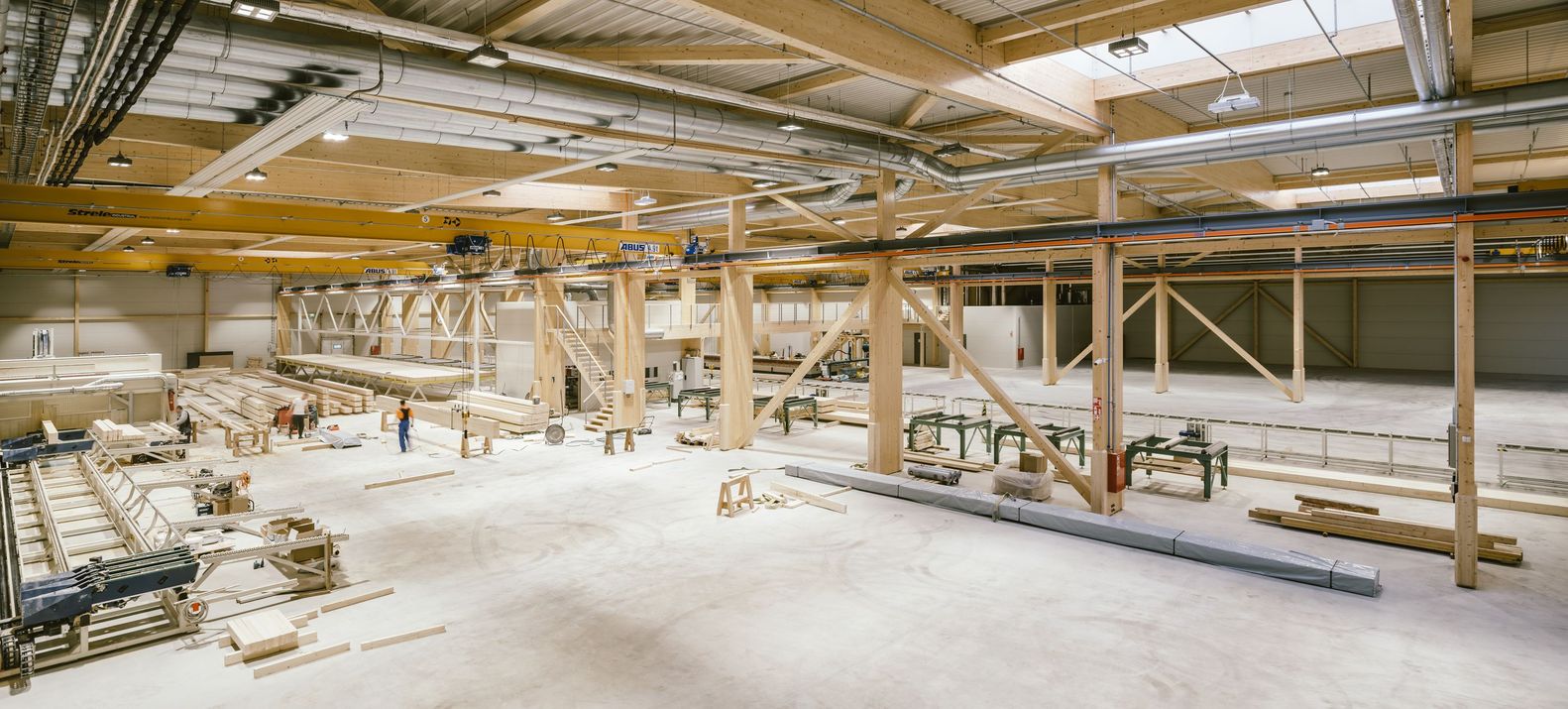CATEGORIES
Can You Paint WPC Wood Plastic Composite and Make it Look Like New?
Wood Plastic Composite (WPC) is celebrated for its durability and low maintenance needs, often mimicking the look of traditional wood without the associated upkeep. But what happens when the colour fades over time due to sunlight, or you simply want a fresh look? Many homeowners and business owners wonder: can you actually paint WPC? The short answer is yes, you absolutely can paint WPC wood plastic composite materials. However, it's not quite as straightforward as painting traditional wood. This article dives deep into the process, explaining why you might want to paint your WPC deck or panels, the crucial preparation steps involved, how to choose the right paint, the best painting techniques, and how to care for painted WPC surfaces to ensure they look like new for years to come. Reading this guide will equip you with the knowledge to successfully refresh your WPC and avoid common pitfalls.
What Exactly is WPC (Wood Plastic Composite)?
Before we talk about painting, let's quickly understand what WPC is. Wood Plastic Composite (WPC) is an innovative hybrid material made from a unique blend of natural wood fibers and recycled plastic materials. Think of it as taking the best of both worlds: the natural aesthetic appeal of wood and the resilience and low maintenance qualities of plastic.
As a manufacturer with extensive experience, we see WPC used in a wide variety of applications, from decking and fencing to cladding and indoor decorative panels like our WPC Wall Panel. The manufacturing process involves heating the wood fibers and plastics, then extruding or molding them into the desired shape. This creates a dense, strong, and often water-resistant surface that stands up well to the elements compared to traditional wood. The plastic component helps protect the wood fibers from moisture and decay, contributing significantly to its durability. This composite nature, however, is also why painting WPC requires a specific approach.
Why Would You Want to Paint WPC? Isn't it Low Maintenance?
It's a fair question. WPC is specifically marketed as a low maintenance alternative to wood, often designed to hold its colour for a long time without needing paint or stain. So, why bother painting it? There are several valid reasons:
- Fading: Despite UV inhibitors often included during manufacturing, prolonged exposure to direct sunlight can eventually cause the WPC colour to fade. Painting can restore the original vibrancy or give it a completely new hue.
- Aesthetic Update: Design trends change, or maybe you just want a different look for your home or business. Paint offers an easy and cost-effective way to update the appearance of your WPC deck or panels.
- Covering Stains or Damage: While durable, WPC isn't indestructible. It can get stained by things like grease or rust, or suffer minor scratches. Paint can effectively cover these imperfections.
- Matching Other Elements: You might want your WPC deck or cladding to match new siding, trim, or outdoor furniture. Paint allows for perfect colour coordination.
- Personal Preference: Sometimes, it just comes down to personal taste. You might prefer a specific glossy finish or a colour not available from the manufacturer.
While WPC requires less maintenance than wood, painting becomes an option when aesthetics are the primary concern or when wear and tear becomes visible. Applying paint can give your WPC installation a fresh lease on life.

Is Painting WPC Different from Painting Traditional Wood?
Yes, painting WPC is significantly different from painting traditional wood, primarily because of the plastic content in the composite material. Wood is porous and readily absorbs paint and primer. WPC, on the other hand, has a much less porous surface, especially the plastic component, which can make paint adhesion challenging.
Here's a breakdown of the key differences:
| Feature | Traditional Wood | WPC (Wood Plastic Composite) |
|---|---|---|
| Porosity | High | Low to Moderate (depends on wood content) |
| Absorption | Readily absorbs paint & stain | Limited paint absorption, relies on adhesion |
| Preparation | Cleaning, sanding, often priming | Thorough cleaning, potential lightly sanding, specific primer crucial |
| Paint Type | Wide variety (oil, latex, acrylic) | Acrylic latex paint specifically for plastic surfaces recommended |
| Adhesion | Generally good if prepped correctly | Can be tricky; paint may peel or crack if not prepped properly |
| Flexibility | Can expand/contract with moisture | More stable, but paint needs some flexibility |
Because WPC doesn't "breathe" or absorb paint like wood, proper preparation is absolutely critical. Skipping steps, especially cleaning and priming with the right product, will almost certainly lead to peeling paint down the road. The goal when painting WPC is to create a strong mechanical bond between the paint and the non-porous surface.
How Do You Prepare the WPC Surface for Painting?
Preparation is arguably the most important stage when you decide to paint WPC. A poorly prepped surface means the paint won't adhere properly, leading to peeling, cracking, and a short lifespan for your paint job. Think of it this way: you're trying to get paint to stick reliably to a surface that contains plastic, which is often inherently slick.
Here's a step-by-step guide to proper preparation:
- Inspection: Carefully examine the WPC surface. Look for any damage, deep scratches, mold, mildew, or stubborn stains. Minor repairs should be made before proceeding.
- Cleaning: This is non-negotiable. The WPC surface must be spotlessly clean. (More on cleaning methods in the next section).
- Sanding (Optional but Recommended): Lightly sand the surface to create a slightly rougher texture, which can significantly help the paint adhere better. (More on sanding below).
- Rinsing: After cleaning (and sanding, if done), rinse the WPC thoroughly with clean water to remove any dust, residue, or cleaning solution.
- Drying: Allow the WPC to dry completely. Trapped moisture under the paint is a recipe for failure (blistering, peeling). Depending on the weather, this could take 24-48 hours. Check the manufacturer's guidelines for drying times.
Getting the preparation right sets the foundation for a long-lasting finish. Don't rush this part! Proper surface preparation ensures the primer and paint can form the strongest possible bond with the WPC material.
What is the Best Way to Clean WPC Before Applying Paint?
Cleaning isn't just about removing obvious dirt; it's about eliminating anything that could interfere with paint adhesion – grease, oils, mold, mildew, pollen, chalky residue from previous finishes, and even unseen contaminants. For WPC, a thorough cleaning is essential.
Here’s how to do it effectively:
- Sweep or Brush: Start by removing loose debris like leaves, dirt, and cobwebs with a stiff brush or broom.
- Wash: Use a specialized WPC cleaner or a solution of mild detergent and warm water. Avoid harsh chemicals like bleach unless specifically recommended by the WPC manufacturer for mold/mildew removal, as they can damage the surface.
- Scrub Gently: Use a soft-bristled brush or sponge to scrub the surface. For tougher spots or stains, you might need a slightly stiffer brush, but avoid wire brushes that can scratch the WPC. Work in manageable sections.
- Address Mold/Mildew: If you see mold or mildew, use a cleaner specifically designed to kill it. Follow the product instructions carefully.
- Rinse Thoroughly: This step is critical. Use a garden hose (a pressure washer on a very low setting can be used cautiously, but high pressure can damage WPC) to rinse away all traces of soap and loosened grime. Residue left behind will hinder paint adhesion.
- Final Check: Once dry, wipe a small area with a clean, white cloth. If it comes away dirty, you may need to clean and rinse again.
Ensure the WPC surface is completely clean and dry before you even think about picking up a paintbrush. Any residue left behind will compromise the paint job.

Do You Need to Sand WPC Before Applying Paint?
Sanding WPC before painting is a topic of some debate, but generally, lightly sanding is recommended. Unlike traditional wood where sanding smooths the surface and opens the pores, sanding WPC serves a different purpose: it slightly roughens the plastic component of the surface, creating a better profile for the primer and paint to grip onto.
Here’s the approach:
- Use Fine-Grit Sandpaper: Opt for a fine-grit sandpaper (around 180-220 grit). Coarser grits can leave visible scratches on the WPC surface.
- Sand Lightly: You are not trying to remove material, just "scuff" the surface. Apply gentle, even pressure. Over-sanding can damage the WPC or create an uneven texture.
- Focus on Glossy Areas: Pay particular attention to any areas that appear particularly smooth or glossy, as these will be the hardest for the paint to adhere to.
- Clean After Sanding: This is crucial. Sanding creates dust. You must remove any dust thoroughly after sanding. Wipe the surface with a tack cloth or a damp microfiber cloth, followed by a final rinse if necessary, and allow it to dry completely.
While some paint manufacturers claim their products don't require sanding even on plastic-like surfaces, taking the extra step to lightly sand the surface provides extra insurance for better adhesion and a more durable, long-lasting finish. Always check the WPC manufacturer's guidelines as well; some may advise against sanding certain types of WPC.
How Do You Choose the Right Paint and Primer for WPC?
Selecting the correct primer and paint is paramount for success when painting WPC. Using the wrong products will almost guarantee failure, resulting in peeling, cracking, or poor coverage.
Choosing the Primer:
- Adhesion is Key: The primer's main job on WPC is to stick tenaciously to the relatively non-porous surface and provide a receptive base for the paint.
- Look for Bonding Primers: Use a high-quality primer specifically designed for adhering to difficult surfaces like plastic, vinyl, or composite materials. These are often labeled as "bonding primers" or "primers for plastic".
- Check Compatibility: Ensure the primer is compatible with your chosen top coat (paint). Most high-quality acrylic latex primers work well with acrylic latex paints.
- Apply a Coat of Primer: Don't skip this step! A good coat of primer makes a world of difference in how well the final paint job looks and lasts. It can also help seal the surface and prevent tannins from the wood fibers bleeding through, although this is less common with WPC than traditional wood.
Choosing the Paint:
- 100% Acrylic Latex Paint: This is generally the best choice for WPC. High-quality paint (specifically 100% acrylic formulations) offers good adhesion, flexibility (important as WPC can expand/contract slightly with temperature changes), durability, and resistance to fading (UV resistance).
- Exterior Grade: If painting an outdoor WPC deck or panels, ensure you choose a paint labeled for exterior use. These contain additives to resist mildew and UV damage from sunlight.
- Consider the Sheen: A satin or semi-gloss finish is often more durable and easier to clean than a flat finish on WPC. However, glossy finishes can highlight any imperfections in the surface.
- Avoid Oil-Based Paints: These typically don't adhere well to the plastic component of WPC and can become brittle and crack over time.
- "Paint and Primer in One": Be cautious. While some of these products are excellent, for a challenging surface like WPC, using a separate, dedicated bonding primer followed by a high-quality paint is usually the safer, more reliable option.
Recommendation Table:
| Product Type | Recommended for WPC? | Key Considerations |
|---|---|---|
| Bonding Primer | Yes (Highly) | Must be suitable for plastic surfaces / composite |
| 100% Acrylic Latex Paint | Yes (Best Choice) | Exterior grade if needed, good flexibility & adhesion |
| Standard Latex Paint | Maybe | Check label for suitability on plastic/vinyl |
| Oil-Based Paint | No | Poor adhesion, prone to cracking |
| Paint + Primer In One | Use with Caution | Separate primer often better for WPC |
| Deck Stain (Solid Color) | Maybe | Must be acrylic based & suitable for composites |
Always read the paint and primer labels carefully to ensure they are suitable for WPC or plastic surfaces. When in doubt, consult the paint manufacturer. Investing in high-quality paint and primer specifically designed for the job will pay off in the long run.
What are the Best Painting Techniques for a Flawless WPC Finish?
Once you've done the right preparation and selected the suitable paint and primer, applying them correctly is the final step to achieving a professional, flawless finish on your WPC. Hasty application can lead to uneven coverage, drip marks, and brush strokes.
Here are some expert tips and painting techniques:
- Weather Matters: Avoid painting in direct, hot sunlight, high humidity, or when rain is expected. Ideal temperatures are usually between 50°F and 90°F (10°C and 32°C). Check the paint can for specific recommendations. Direct sun can cause the paint to dry too quickly, leading to poor adhesion and brush marks.
- Apply Primer Evenly: Using a high-quality synthetic paintbrush or a roller designed for smooth surfaces, apply a coat of primer thinly and evenly. Don't let it pool. Allow it to dry completely according to the manufacturer's instructions.
- Multiple Thin Coats are Better: When it's time to start painting, apply multiple thin coats of paint rather than one thick coat. Thin coats dry faster, adhere better, and result in a smoother finish. Allow each coat to dry fully before applying the next (check the paint can for recoat times). Two thin top coats are usually sufficient over a primer.
- Use Quality Applicators: A good brush (synthetic bristles for latex/acrylic paint) or roller (short nap for smooth surfaces) makes a significant difference. Using cheap tools can result in shedding bristles or an uneven texture.
- Maintain a Wet Edge: To avoid lap marks, try to paint a section completely while maintaining a "wet edge." This means applying new paint next to the just-painted area before it starts to dry, blending them seamlessly. Work in manageable sections.
- Brush/Roll Technique: If using a brush, apply paint with long, smooth strokes in the direction of any simulated wood grain on the WPC. If using a roller, apply evenly and then lightly "back-roll" in one direction to smooth the finish. Avoid over-brushing or over-rolling, which can introduce air bubbles or leave marks.
- Consider Spraying: For large, flat WPC areas like walls or fences, using an airless paint sprayer can provide a very smooth, even finish quickly. Back-brushing or back-rolling lightly after spraying can help ensure proper adhesion. Mask off surrounding areas carefully if spraying.
Patience is key. Allow adequate drying time between coats. Rushing the process is the quickest way to ruin the finish. Following these painting techniques will help you achieve a durable and aesthetically pleasing result that makes your WPC look like new.
How Do You Care for Painted WPC Surfaces?
You've successfully painted your WPC, and it looks great! Now, how do you keep it that way? While painted WPC might require slightly more care than unpainted WPC, the maintenance is still relatively straightforward compared to painted traditional wood.
Here's how to care for painted WPC:
- Regular Cleaning: Just like unpainted WPC, painted surfaces benefit from periodic cleaning. Gently wash with mild soap and water using a soft brush or cloth once or twice a year, or as needed, to remove dirt, pollen, and grime. Rinse thoroughly.
- Avoid Abrasives: Do not use abrasive cleaners, stiff brushes, or pressure washers (except on very low settings) on the painted surface, as these can scratch or peel the paint.
- Inspect Regularly: Check the painted surface periodically (e.g., annually) for any signs of wear, such as chipping, cracking, or peeling paint. Pay close attention to edges, corners, and areas exposed to heavy foot traffic or harsh weather.
- Touch-Ups: Address any minor chips or scratches promptly with leftover paint to prevent moisture from getting underneath the paint film. Clean the small area, lightly sand the edges of the chip if necessary, apply primer if the WPC is exposed, and then dab on the touch-up paint.
- Consider a Clear Coat (Optional): For high-traffic areas like a WPC deck, applying a compatible, non-yellowing acrylic clear coat over the final paint coat can add an extra layer of protection against scratches and UV damage, potentially extending the life of the paint job. Ensure the clear coat is compatible with your paint.
With proper care, a well-executed paint job on WPC can last for many years, keeping your deck, fence, or decorative interior panels looking fresh and vibrant.

Can Painting WPC Void the Manufacturer's Warranty?
This is a crucial question, especially for new WPC installations or for B2B clients like Mark Wilson who need to assure their customers. The answer is: it depends on the manufacturer.
- Read the Warranty: Always carefully read the warranty documentation provided by the WPC manufacturer before you decide to paint. Some warranties explicitly state that altering the surface, including painting, will void the warranty.
- Manufacturer Recommendations: Some manufacturers may permit painting but might specify certain types of paint or preparation methods. They might even offer their own line of coatings recommended for their products. Following their specific guidelines is essential to potentially keep the warranty intact regarding issues not related to the paint itself (e.g., structural integrity).
- Why Warranties Might Be Voided: Manufacturers design WPC to perform optimally as is. Applying an incompatible paint or using improper preparation methods could potentially trap moisture, lead to premature degradation, or cause other issues they don't want to be liable for. The paint itself creates a new layer whose performance they cannot guarantee.
- Contact the Manufacturer: If the warranty is unclear or you have doubts, contact the WPC manufacturer directly. Explain that you are considering painting and ask if it affects the warranty and if they have specific recommendations. Get their response in writing if possible.
As a manufacturer of quality building materials like PVC Marble Sheets, we understand the importance of warranties. It's always best practice to check these details before undertaking modifications like painting. If the WPC is older and likely out of warranty, this becomes less of a concern, but for newer installations, it's a critical consideration.
Creative Ideas for Painting Your WPC Deck or Panels
Painting WPC doesn't just have to be about restoring faded colour or covering imperfections. It opens up a world of creative possibilities to enhance your space! Here are a few creative ideas:
- Two-Tone Designs: Paint the main WPC deck boards one colour and the border boards, railings, or fascia a contrasting or complementary colour. This adds depth and visual interest.
- Stenciled Patterns: Use stencils to add patterns to your WPC deck or wall panels. This could range from simple geometric shapes to intricate floral designs, creating a unique focal point. Ensure you use paint suitable for foot traffic if on a deck.
- Faux Rug Effect: On a WPC deck, paint a large rectangle in the seating area with a contrasting colour or pattern to mimic the look of an outdoor rug.
- Colour Blocking: For WPC wall panels, consider painting different sections in bold, contrasting colours for a modern, artistic look. This works particularly well with fluted or 3D PS Wall Panel designs.
- Matching Accents: Paint your WPC fence or deck railings to match window trims, doors, or even outdoor furniture cushions for a cohesive design scheme.
- Simulated Wood Grain: While WPC often comes with an embossed wood grain, if you have a smooth WPC surface or want a different grain effect, you can use specialized wood graining tools with your paint to create a custom look. This requires some practice but can yield impressive results.
- Ombre Effect: Gradually blend one paint colour into another across a WPC wall or fence for a subtle yet stylish ombre effect.
Don't be afraid to get creative! With the right preparation and paint, your WPC surfaces can become a canvas for your design ideas, transforming them from merely functional to truly fabulous. Remember to apply a good primer first, use high-quality paint, and seal with a clear coat for extra protection if desired.
Key Takeaways for Painting WPC
Painting WPC wood plastic composite is definitely achievable and can revitalize its appearance. Here are the most important things to remember:
- Preparation is Paramount: Thorough cleaning is non-negotiable. Lightly sanding the surface with fine-grit sandpaper is highly recommended to improve adhesion.
- Choose the Right Products: Use a high-quality bonding primer suitable for plastic surfaces and follow with a 100% acrylic latex paint (exterior grade if needed). Avoid oil-based paint.
- Technique Matters: Apply multiple thin coats of paint rather than one thick coat. Allow proper drying time between the primer coat and subsequent paint coats. Maintain a wet edge and use quality applicators (brush, roller, or sprayer).
- Weather Awareness: Avoid painting in extreme temperatures, direct sunlight, or high humidity.
- Check the Warranty: Painting may void the WPC manufacturer's warranty. Always check the warranty details before you start painting.
- Maintenance: Regularly clean the painted WPC surface gently and perform touch-ups as needed to maintain the paint's integrity and appearance.
By following these guidelines, you can successfully paint your WPC deck, fence, or panels, ensuring a beautiful, durable, and long-lasting finish that will make your composite installation look like new.





